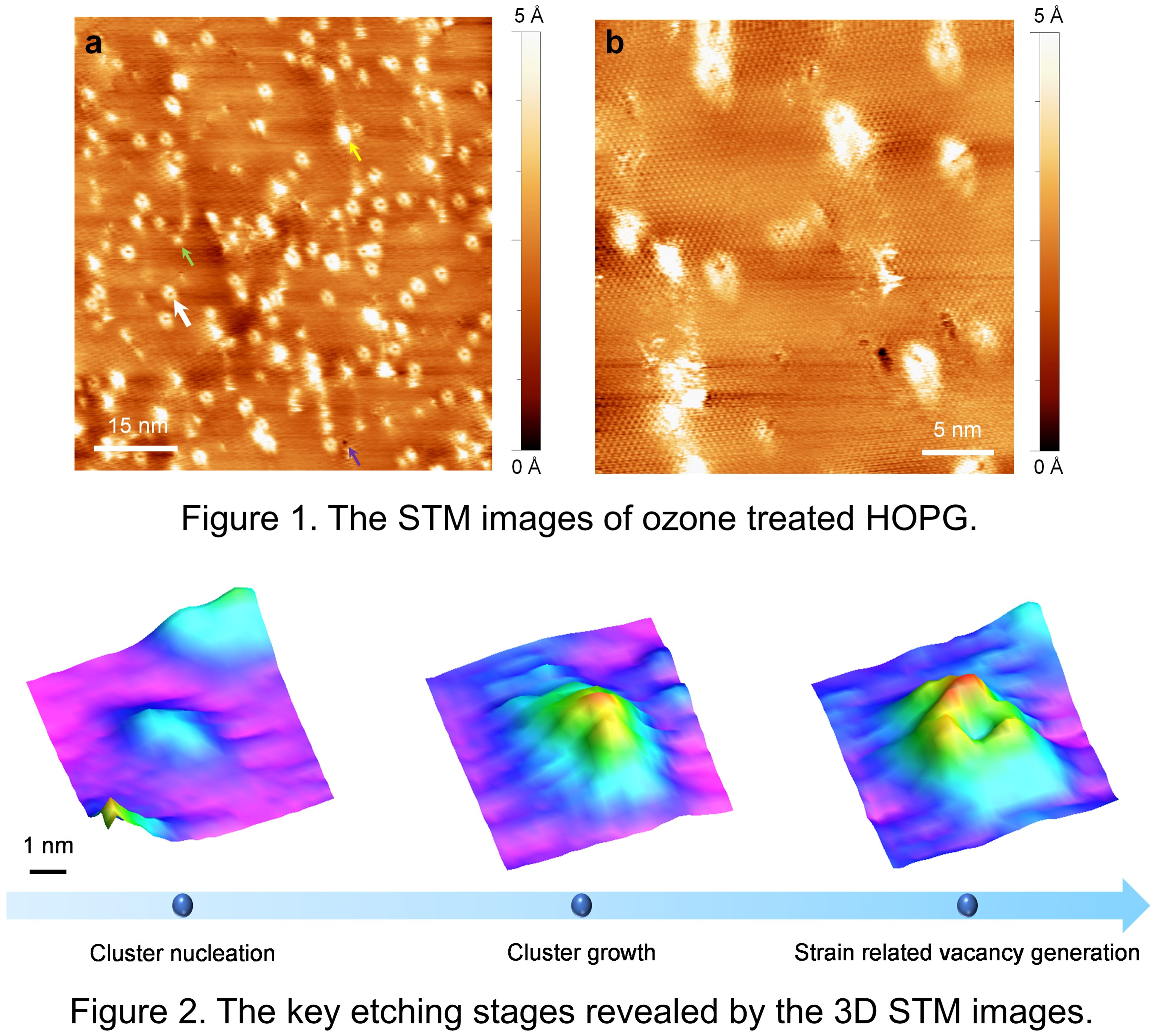2022 Annual Meeting
(401g) A Mechanism Study on the Incorporation of Vacancy Defects in Graphene Lattice By Oxidative Etching
Authors
In this presentation, I will report the events/structures that lead to the formation of vacancy defects upon treatment of highly oriented pyrolytic graphite (HOPG) to O3, as observed by low-temperature scanning tunneling microscope (LTSTM).[3] We could resolve several different representative nanostructures on HOPG, as indicated by the different colored arrows in Fig. 1(a), which correspond to the key evolution stages. We could assign these stages as (i) nucleation of the epoxy/ether cluster on the basal plane, (ii) growth of the cluster, (iii) strain related vacancy generation.[4] The three-dimensional (3D) LTSTM images of these three etching stages are shown in Fig. 2. Statistical analysis of the dimension of the cluster, high-resolution X-ray photoelectron spectroscopy (XPS) and density functional theory-based simulations confirm that the cluster consists of epoxy and ether groups. These subsequently transform into semiquinone groups and finally gasify into CO/CO2 to incorporate vacancy defects. Our finding is expected to provide the key inspiration on developing techniques to incorporate a high density of uniformly-sized vacancy defects in graphene which is extremely attractive for the molecular sieving application.
References
[1] S. Huang, S. Li, L.F. Villalobos, M. Dakhchoune, et al., Sci. Adv., 7, eabf0116 (2021).
[2] S. Huangâ , S. Liâ , K. Hsu, L.F. Villalobos, K.V. Agrawal, J. Membr. Sci., 637, 119628 (2021).
[3] S. Li, M.T. Vahdat, S. Huang, K. Hsu, M. Rezaei, M. Mensi, N. Marzari, K.V. Agrawal, JACS Au, 2, 723 (2022).

